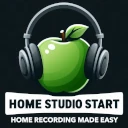“Birds raised in cages believe that flying is a disease.” – Alejandro Jodorowsky
Have you ever felt like a bird in a cage, trapped by the limitations and expectations of the music industry? Have you ever dreamed of flying free, creating your own music, and reaching your own fans, without depending on the big and saturated record companies?
If you answered yes, then this blog post is for you. In this post, you will learn how to achieve your musical dreams with home recording, and how to become an independent and successful artist in the digital age.
You will discover:
- Why you need to learn about marketing, and how to use it to reach and connect with your potential audience.
- How to access the right tools for home recording, and how to use them effectively to produce high-quality music.
- How to define your musical goals and style, and how to express them through your music.
- How to get inspiration to compose music, and how to overcome creative blocks.
- How to get your first super fans, and how to turn them into loyal and passionate supporters of your music.
By the end of this post, you will have a clear and practical guide on how to start and grow your home recording career, and how to achieve your musical dreams without depending on the big record labels.
Are you ready to fly? Then let’s get started!
Why You Need To Learn About Marketing
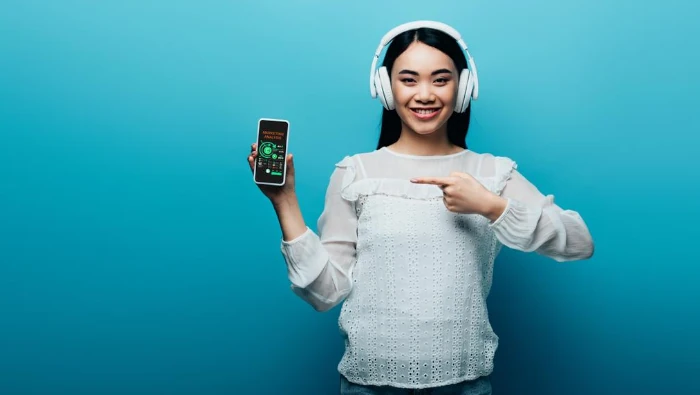
Marketing is the process of creating, communicating, and delivering value to your customers. It is also the art and science of understanding and satisfying their needs and wants. Marketing is essential for any business, and especially for musicians who want to succeed in the home recording niche.
Why is that?
Because the music industry is a highly competitive and dynamic market, where the supply of music exceeds the demand, and where the consumers have more choices and power than ever before. The music industry is also undergoing a major transformation, due to the emergence and evolution of digital technologies, such as the internet, social media, streaming platforms, and online distribution services.
These technologies have created new opportunities and challenges for musicians, and have changed the way they create, promote, and sell their music. On one hand, these technologies have lowered the barriers to entry and enabled anyone with a computer and the internet to record and distribute their music to a global audience. On the other hand, these technologies have also increased the competition and the noise in the market, and have made it harder for musicians to stand out and get noticed by their potential fans.
This is where marketing comes in.
Overcoming these challenges and capitalizing on these opportunities is achievable through effective marketing. Reaching and connecting with the right audience, individuals enthusiastic about your music and eager to support you, becomes possible with strategic marketing efforts. Building and expanding your fan base, transforming them into devoted and passionate customers, is a potential outcome of well-executed marketing. Establishing and strengthening your personal brand, setting yourself apart from the crowd, is a key aspect that marketing can assist with. Generating and boosting your income, thereby helping you attain your musical goals, is another valuable contribution of marketing.
But how do you learn about marketing?
There are many ways to learn about marketing, such as reading books, taking courses, watching videos, listening to podcasts, following blogs, joining communities, and hiring mentors or coaches. However, the best way to learn about marketing is by doing it. By applying the principles and practices of marketing to your own music, and by testing and experimenting with different strategies and tactics, you will learn what works and what doesn’t, and you will improve your skills and results over time.
That’s why, in this blog post, we will share with you some of the most effective and proven marketing strategies and tactics that you can use to promote your home recording music, and to achieve your musical dreams without depending on the big record labels.
Are you ready to learn about marketing? Then let’s move on to the next section, where we will show you how to access the right tools for home recording.
How To Access The Right Tools For Home Recording
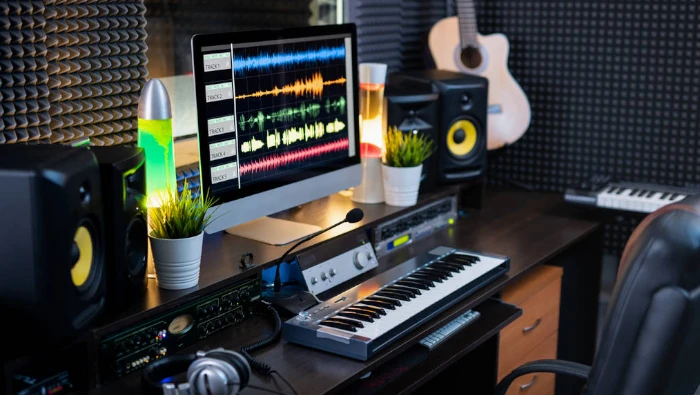
One of the biggest advantages of home recording is that you don’t need a lot of expensive and complicated equipment to produce high-quality music. In fact, you can access most of the tools that you need with just a computer and the internet.
These tools are very similar to those that the big record labels use, and they can help you with every aspect of your home recording process, such as recording, editing, mixing, mastering, distributing, and promoting your music.
But what are these tools, and how can you access them?
In this section, we will introduce you to some of the most popular and useful tools for home recording, and we will show you how to use them effectively to achieve your musical dreams.
Recording Tools
Recording tools are the software and hardware that you use to capture and record your musical performance. They include:
- A computer: This is the device that you use to run the software and connect the hardware that you need for home recording. You can use any type of computer, such as a desktop, a laptop, or a tablet, as long as it has enough memory, storage, and processing power to handle the audio files and applications that you will use. You can also use any operating system, such as Windows, Mac, or Linux, as long as it is compatible with the software and hardware that you will use.
- A digital audio workstation (DAW): This is the software that you use to record, edit, mix, and master your music. A DAW is like a virtual studio, where you can arrange and manipulate your audio tracks, add effects and plugins, and export your final product. There are many DAWs available, such as Audacity, GarageBand, FL Studio, Ableton Live, Pro Tools, and Logic Pro. Some of them are free, some of them are paid, and some of them have both free and paid versions. You can choose the one that suits your needs, preferences, and budget. You can also try out different DAWs and see which one you like the best.
- A microphone: This is the device that you use to capture and convert your sound into an electrical signal that can be recorded by your computer. You can use any type of microphone, such as a dynamic, a condenser, or a USB microphone, as long as it has good sound quality, sensitivity, and durability. You can also use different microphones for different purposes, such as vocals, instruments, or podcasts. Some of the most popular microphones for home recording are Shure SM58, Blue Yeti, Rode NT1-A, and Audio-Technica AT2020.
- An audio interface: This is the device that you use to connect your microphone and other audio sources to your computer. An audio interface is like a bridge, that converts the analog signal from your microphone into a digital signal that can be recorded by your computer, and vice versa. An audio interface also provides power, preamps, and controls for your microphone and other audio sources. You can use any type of audio interface, such as a USB, a FireWire, or a Thunderbolt audio interface, as long as it has enough inputs and outputs, and it is compatible with your computer and your DAW. Some of the most popular audio interfaces for home recording are Focusrite Scarlett 2i2, Presonus AudioBox USB 96, M-Audio M-Track 2X2, and Behringer U-Phoria UMC202HD.
- A pair of headphones or speakers: These are the devices that you use to listen to and monitor your sound during and after recording. You can use any type of headphones or speakers, such as earbuds, over-ear, or on-ear headphones, or studio monitors or bookshelf speakers, as long as they have good sound quality, accuracy, and comfort. You can also use different headphones or speakers for different purposes, such as recording, mixing, or mastering. Some of the most popular headphones and speakers for home recording are Sony MDR-7506, Sennheiser HD 280 Pro, KRK Rokit 5 G4, and JBL 305P MkII.
These are some of the basic home recording tools that you need for home recording. Of course, you can also use other tools, such as MIDI controllers, synthesizers, drum machines, guitars, keyboards, and other musical instruments, depending on your musical style and preference. You can also use other accessories, such as pop filters, shock mounts, stands, cables, and adapters, to improve your sound quality and recording experience.
Editing, Mixing, and Mastering Tools
Editing, mixing, and mastering tools are the software and plugins that you use to enhance and polish your recorded sound. They include:
- Editing tools: These are the tools that you use to cut, copy, paste, trim, fade, and adjust your audio tracks. You can use the built-in editing tools in your DAW, or you can use external editing tools, such as WavePad, Ocenaudio, or Sound Forge. You can also use online editing tools, such as TwistedWave, AudioTrimmer, or Soundation.
- Mixing tools: These are the tools that you use to balance, blend, and harmonize your audio tracks. You can use the built-in mixing tools in your DAW, such as equalizers, compressors, limiters, gates, reverbs, delays, and other effects and plugins. You can also use external mixing tools, such as iZotope Ozone, Waves, or FabFilter. You can also use online mixing tools, such as LANDR, CloudBounce, or MixingMastering.
- Mastering tools: These are the tools that you use to finalize, optimize, and enhance your mixed sound. You can use the built-in mastering tools in your DAW, such as loudness meters, spectrum analyzers, multiband compressors, limiters, and other effects and plugins. You can also use external mastering tools, such as iZotope Ozone, Waves, or FabFilter. You can also use online mastering tools, such as LANDR, CloudBounce, or MixingMastering.
These are some of the basic editing, mixing, and mastering tools that you need for home recording. Of course, you can also use other tools, such as pitch correction, noise reduction, modulation, distortion, and other effects and plugins, depending on your musical style and preference.
Distributing and Promoting Tools
Distributing and promoting tools are the platforms and services that you use to share and market your music. They include:
- Distributing tools: These are the tools that you use to upload and distribute your music to various online platforms, such as streaming services, online stores, and social media. You can use direct distributing tools, such as SoundCloud, Bandcamp, or YouTube, where you can upload your music directly to the platform and set your own price and terms. You can also use aggregator distributing tools, such as DistroKid, CD Baby, or TuneCore, where you can upload your music to the service and they will distribute it to multiple platforms for a fee or a commission. You can also use hybrid distributing tools, such as Amuse, AWAL, or Stem, where you can upload your music to the service and they will distribute it to multiple platforms for free or for a share of your royalties.
- Promoting tools: These are the tools that you use to promote and market your music to your potential fans and customers. You can use organic promoting tools, such as Facebook, Instagram, Twitter, or TikTok, where you can create and share your own content, such as posts, stories, videos, or live streams, and interact with your audience. You can also use paid promoting tools, such as Facebook Ads, Instagram Ads, Twitter Ads, or TikTok Ads, where you can create and run your own ads, such as banners, videos, or stories, and target your audience based on their demographics, interests, and behaviors. You can also use influencer promoting tools, such as FameBit, AspireIQ, or Upfluence, where you can find and collaborate with influencers, such as bloggers, vloggers, podcasters, or celebrities, who can endorse and recommend your music to their followers.
These are some of the basic distributing and promoting tools that you need for home recording.
How To Define Your Musical Goals And Style
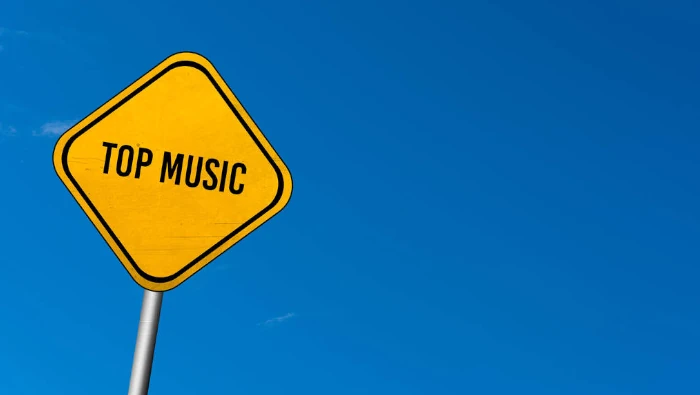
One of the most important steps in your home recording journey is to define your musical goals and style. This will help you focus your efforts, express your identity, and attract your audience.
But how do you define your musical goals and style, and why is this important for your success?
In this section, we will guide you on how to set your musical goals and style, and we will show you how to express them through your music.
Setting Your Musical Goals
Defining your musical objectives involves determining the outcomes you wish to attain with your music and establishing criteria for measuring your progress and success. Formulating your musical goals provides assistance in:
- Clarify your vision and purpose
- Motivate and inspire yourself
- Plan and prioritize your actions
- Track and evaluate your results
- Celebrate and reward your achievements
But how do you set your musical goals?
There are many ways to set your musical goals, but one of the most effective and popular methods is to use the SMART framework. SMART stands for Specific, Measurable, Achievable, Relevant, and Time-bound. This means that your musical goals should be:
- Specific: Your musical goals should be clear and precise, not vague and general. For example, instead of saying “I want to make more music”, you could say “I want to record and release one song every month”.
- Measurable: Your musical goals should be quantifiable and verifiable, not subjective and ambiguous. For example, instead of saying “I want to improve my sound quality”, you could say “I want to achieve a loudness level of -14 LUFS and a dynamic range of 8 DR for my songs”.
- Achievable: Your musical goals should be realistic and attainable, not impossible and unrealistic. For example, instead of saying “I want to become a superstar overnight”, you could say “I want to increase my fan base by 10% every month”.
- Relevant: Your musical goals should be aligned and consistent with your musical style and vision, not contradictory and conflicting. For example, instead of saying “I want to make rap music”, you could say “I want to make rap music that reflects my personal experiences and values”.
- Time-bound: Your musical goals should have a deadline and a timeline, not be open-ended and indefinite. For example, instead of saying “I want to release an album someday”, you could say “I want to release an album by the end of the year”.
These are some of the characteristics of SMART musical goals. Of course, you can also use other frameworks or criteria to set your musical goals, such as OKR (Objectives and Key Results), KPI (Key Performance Indicators), or BHAG (Big Hairy Audacious Goals), depending on your preference and situation.
The important thing is to set your musical goals in a way that works for you, and that helps you achieve your musical dreams.
Defining Your Musical Style
Crafting your musical identity involves determining the genre and presentation of the music you aim to create. Establishing your musical style offers guidance in:
- Express your personality and identity
- Differentiate yourself from the crowd
- Communicate your message and emotions
- Connect with your fans and customers
- Create your personal brand and image
But how do you define your musical style?
There are many ways to define your musical style, but one of the most simple and practical methods is to use the 3W framework. 3W stands for What, Who, and Why. This means that you should ask yourself:
- What: What kind of music do you want to make? What are the elements and characteristics of your music, such as the genre, the tempo, the mood, the instruments, the vocals, the lyrics, the structure, the production, and the quality?
- Who: Who is your target audience? Who are the people who will listen to and enjoy your music, and who will support you and buy your music? What are their demographics, interests, behaviors, and preferences?
- Why: Why do you want to make this kind of music? What is the purpose and meaning of your music, and what is the value and benefit that you provide to your audience? What is your unique selling proposition, and what is your competitive advantage?
These are some of the questions that you should ask yourself to define your musical style. Of course, you can also use other frameworks or methods to define your musical style, such as SWOT (Strengths, Weaknesses, Opportunities, and Threats), USP (Unique Selling Proposition), or STP (Segmentation, Targeting, and Positioning), depending on your preference and situation.
The important thing is to define your musical style in a way that works for you, and that helps you express your musical dreams.
Expressing Your Musical Goals And Style Through Your Music
Once you have set your musical goals and defined your musical style, the next step is to express them through your music. This means that you should create and share your music in a way that reflects and supports your musical goals and style, and that helps you achieve your musical dreams.
But how do you express your musical goals and style through your music?
There are many ways to express your musical goals and style through your music, but one of the most essential and effective ways is to use the 4P framework. 4P stands for Product, Price, Place, and Promotion. This means that you should consider:
- Product: This is your music itself, the core of your musical expression. You should create and produce your music in a way that matches your musical goals and style, and that delivers value and satisfaction to your audience. You should also ensure that your music has high quality, originality, and consistency.
- Price: This is the amount of money that you charge for your music, the exchange of your musical expression. You should set and adjust your price in a way that reflects your musical goals and style, and that balances your costs and profits. You should also consider different pricing strategies, such as free, freemium, premium, or subscription, depending on your preference and situation.
- Place: This is the location and platform where you distribute and sell your music, the access of your musical expression. You should choose and use the place in a way that aligns with your musical goals and style, and that reaches and connects with your audience. You should also explore different places, such as online, offline, or hybrid, depending on your preference and situation.
- Promotion: This is the communication and marketing of your music, the awareness of your musical expression. You should design and implement your promotion in a way that supports your musical goals and style, and that attracts and engages your audience. You should also use different promotion tools, such as organic, paid, or influencer, depending on your preference and situation.
These are some of the aspects that you should consider to express your musical goals and style through your music. Of course, you can also use other frameworks or factors to express your musical goals and style through your music, such as the 7Ps (Product, Price, Place, Promotion, People, Process, and Physical Evidence), the 4Cs (Customer, Cost, Convenience, and Communication), or the 4Es (Experience, Exchange, Everyplace, and Evangelism), depending on your preference and situation.
The important thing is to express your musical goals and style through your music in a way that works for you, and that helps you achieve your musical dreams.
How To Get Inspiration To Compose Music
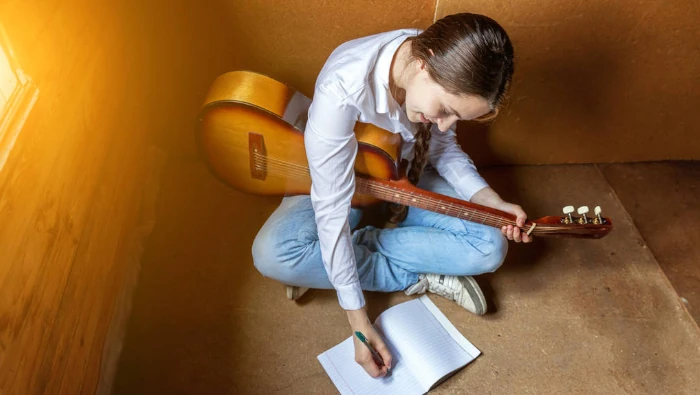
One of the most common and frustrating challenges that home recording artists face is the lack of inspiration to compose music. Sometimes, you may feel like you have nothing to say, nothing to express, or nothing to create. Sometimes, you may feel like you have run out of ideas, or that your ideas are not good enough, or that you have lost your passion and motivation.
But don’t worry, this is normal and natural. Every musician, no matter how experienced or talented, goes through periods of creative drought and block. The good news is that there are many ways to overcome this challenge and to get inspiration to compose music.
In this section, we will share with you some of the most effective and proven tips and techniques on how to get inspiration to compose music, and how to overcome creative blocks.
Listening To Other Artists
One of the best ways to get inspiration to compose music is to listen to other artists, especially those who are in your musical style or genre, or those who inspire you and influence you. Listening to other artists can help you:
- Learn from their skills and techniques
- Discover new sounds and styles
- Stimulate your imagination and creativity
- Find new sources of emotion and expression
- Challenge yourself and improve yourself
But how do you listen to other artists?
There are many ways to listen to other artists, such as using streaming services, online radios, podcasts, playlists, or recommendations. You can also use tools such as Spotify, Pandora, SoundCloud, or YouTube to find and listen to other artists. You can also use tools such as Shazam, Genius, or WhoSampled to identify and learn more about the songs and artists that you like.
When you listen to other artists, you should pay attention to the elements and characteristics of their music, such as the melody, the harmony, the rhythm, the structure, the lyrics, the vocals, the instruments, the production, and the quality. Exploring the message and emotion they convey, and understanding their relevance to both you and your audience, is essential.
Analyzing and critiquing their musical creations, discerning strengths and weaknesses, noting similarities and differences, recognizing influences and inspirations, and understanding their goals and intentions is a valuable practice. Emulating and imitating their musical style, experimenting and improvising with their compositions, and crafting your own variations and interpretations contribute to your artistic growth.
By listening to other artists, you will not only get inspiration to compose music, but also expand your musical knowledge and vocabulary, and develop your musical taste and style.
Reading Books
Another great way to get inspiration to compose music is to read books, especially those that are related to your musical style or genre, or those that inspire you and influence you. Reading books can help you:
- Learn from their stories and insights
- Discover new perspectives and concepts
- Stimulate your imagination and creativity
- Find new sources of emotion and expression
- Challenge yourself and improve yourself
But how do you read books?
There are many ways to read books, such as using physical books, e-books, audiobooks, or online libraries. You can also use tools such as Amazon, Goodreads, Audible, or Scribd to find and read books. You can also use tools such as SparkNotes, CliffsNotes, or BookRags to summarize and review the books that you read.
When you read books, you should pay attention to the elements and characteristics of their content, such as the theme, the plot, the characters, the setting, the style, the tone, the language, and the message. Gaining insight into the emotion and significance they express, and comprehending their connection to both you and your audience, is crucial.
Delving into an analysis and critique of their material, discerning strengths and weaknesses, noting similarities and differences, understanding influences and inspirations, and grasping their goals and intentions is a constructive approach. Seeking to emulate and imitate their content, experimenting and improvising with their material, and crafting your own variations and interpretations contribute to your artistic development.
By reading books, you will not only get inspiration to compose music, but also expand your literary knowledge and vocabulary, and develop your literary taste and style.
Watching Movies
Another excellent way to get inspiration to compose music is to watch movies, especially those that are related to your musical style or genre, or those that inspire you and influence you. Watching movies can help you:
- Learn from their visuals and sounds
- Discover new scenes and scenarios
- Stimulate your imagination and creativity
- Find new sources of emotion and expression
- Challenge yourself and improve yourself
But how do you watch movies?
There are many ways to watch movies, such as using DVDs, Blu-rays, streaming services, online videos, or cinemas. You can also use tools such as Netflix, Hulu, Amazon Prime Video, or YouTube to find and watch movies. You can also use tools such as IMDb, Rotten Tomatoes, or Metacritic to rate and review the movies that you watch.
When you watch movies, you should pay attention to the elements and characteristics of their production, such as the genre, the plot, the characters, the setting, the cinematography, the editing, the sound, the music, and the message. Furthermore, you should strive to understand the emotion and meaning they convey and how it relates to both you and your audience.
Moreover, endeavor to analyze and critique their production, identifying their strengths and weaknesses, similarities and differences, as well as recognizing their influences, inspirations, goals, and intentions. Additionally, seek to emulate and imitate their production, experiment and improvise with their techniques, and create your own variations and interpretations of their work.
By watching movies, you will not only get inspiration to compose music, but also expand your cinematic knowledge and vocabulary, and develop your cinematic taste and style.
Exploring Nature
Another wonderful way to get inspiration to compose music is to explore nature, especially those that are related to your musical style or genre, or those that inspire you and influence you. Exploring nature can help you:
- Learn from its beauty and diversity
- Discover new sights and sounds
- Stimulate your imagination and creativity
- Find new sources of emotion and expression
- Challenge yourself and improve yourself
But how do you explore nature?
There are many ways to explore nature, such as using hiking, camping, biking, or traveling. You can also use tools such as Google Maps, AllTrails, Wikiloc, or TripAdvisor to find and explore nature. You can also use tools such as iNaturalist, PlantSnap, or Shazam for Nature to identify and learn more about the plants and animals that you encounter.
When you explore nature, you should pay attention to the elements and characteristics of its environment, such as the landscape, the climate, the flora, the fauna, the sounds, the smells, and the sensations. Additionally, it’s crucial to grasp the emotion and meaning it communicates, and consider how it resonates with both you and your audience.
Equally important is the endeavor to scrutinize and assess its environment, pinpointing strengths and weaknesses, noting similarities and differences, understanding influences and inspirations, and discerning its overarching goals and intentions. Take the initiative to emulate and imitate its environment, engage in experimentation and improvisation within that context, and craft your own unique variations and interpretations of the environment in question.
By exploring nature, you will not only get inspiration to compose music, but also expand your ecological knowledge and vocabulary, and develop your ecological taste and style.
Meditating
Another amazing way to get inspiration to compose music is to meditate, especially those that are related to your musical style or genre, or those that inspire you and influence you. Meditating can help you:
- Learn from your inner self and intuition
- Discover new thoughts and feelings
- Stimulate your imagination and creativity
- Find new sources of emotion and expression
- Challenge yourself and improve yourself
But how do you meditate?
There are many ways to meditate, such as using breathing, mindfulness, visualization, mantra, or music. You can also use tools such as Headspace, Calm, Insight Timer, or Zen to guide and assist you in your meditation. You can also use tools such as Spotify, Pandora, SoundCloud, or YouTube to find and listen to music that can help you meditate.
When you meditate, you should pay attention to the elements and characteristics of your mental state, such as your thoughts, feelings, sensations, images, sounds, and messages. Moreover, explore the intricacies of your creative process, understanding the techniques and methods you employ and how they resonate with your artistic vision.
Take the time to analyze and critique your approach, identifying strengths and weaknesses, recognizing similarities and differences, understanding the influences and inspirations that shape your creative path, and clarifying your artistic goals and intentions. Additionally, strive to emulate and imitate your creative process, allowing room for experimentation and improvisation, and fostering the creation of unique variations and interpretations that reflect your evolving artistic identity.
By meditating, you will not only get inspiration to compose music, but also expand your spiritual knowledge and vocabulary, and develop your spiritual taste and style.
These are some of the most effective and proven tips and techniques on how to get inspiration to compose music, and how to overcome creative blocks. Of course, you can also use other tips and techniques, such as brainstorming, freewriting, mind mapping, or using prompts, depending on your preference and situation.
The important thing is to get inspiration to compose music in a way that works for you, and that helps you to achieve success.
How To Get Your First Super Fans

One of the most rewarding and exciting aspects of home recording is to get your first super fans, and to turn them into loyal and passionate supporters of your music. Super fans are the people who love your music so much that they will do anything to help you succeed, such as buying your music, sharing your music, attending your shows, joining your fan club, and spreading the word about you.
Super fans are the lifeblood of your home recording career, and they can help you achieve your musical dreams without depending on the big record labels.
But how do you get your first super fans, and how do you turn them into loyal and passionate supporters of your music?
In this section, we will reveal the secrets of how to get your first super fans, and we will show you how to engage and delight them with your music.
What Is A Super Fan?
Distinguished from a casual or regular fan, a super fan goes beyond merely occasional or frequent listenership. This devoted enthusiast is fixated on your music, maintaining a constant engagement, possessing an in-depth knowledge of both you and your musical repertoire. They actively participate across every platform and channel, fostering interactions with you and your music, providing unwavering support, and becoming a vocal advocate for your musical endeavors.
Notably, a super fan extends emotional and financial investments into your music, establishing a profound personal connection. They harbor a deep sense of trust and value towards you and your musical creations, harboring a sincere desire for your continued success.
Moreover, a super fan willingly dedicates more time, money, and energy to your music than to any other, demonstrating a willingness to go above and beyond in expressing their profound love and appreciation for your musical offerings.
How To Find Your First Super Fans
The first step to get your first super fans is to find them. This means that you need to identify and locate the people who are most likely to become your super fans, and who are most compatible with your musical style and vision.
But how do you find your first super fans?
There are many ways to find your first super fans, such as using:
- Your existing network: This is the easiest and most obvious way to find your first super fans. You can start by reaching out to your friends, family, colleagues, classmates, neighbors, or anyone else who knows you and your music, and who might be interested in your music. You can also ask them to refer you to their friends, family, colleagues, classmates, neighbors, or anyone else who might be interested in your music. You can also use tools such as Facebook, Instagram, Twitter, or TikTok to connect and communicate with your existing network, and to share and promote your music.
- Your niche market: This is the most effective and targeted way to find your first super fans. You can start by defining your niche market, which is the specific segment of the music market that you want to serve and satisfy with your music. You can define your niche market by using criteria such as genre, subgenre, mood, theme, message, audience, location, or any other factor that distinguishes your music from the rest. You can also use tools such as Spotify, Pandora, SoundCloud, or YouTube to find and listen to other artists who are in your niche market, and to see who their fans are, and what they like and dislike about their music. You can also use tools such as Google Trends, BuzzSumo, or AnswerThePublic to find and analyze the trends, topics, and questions that are relevant to your niche market, and to see what your potential fans are searching for, talking about, and asking about your music.
- Your online communities: This is the most interactive and engaging way to find your first super fans. You can start by joining and participating in online communities that are related to your musical style or genre, or that inspire you and influence you. You can find and join online communities on platforms such as Reddit, Quora, Discord, or Facebook Groups. You can also use tools such as Meetup, Eventbrite, or Bandsintown to find and join offline communities and events that are related to your musical style or genre, or that inspire you and influence you. You can also use tools such as Medium, WordPress, or Blogger to create and share your own content, such as blogs, articles, or stories, that are related to your musical style or genre, or that inspire you and influence you, and to attract and interact with your potential fans.
These are some of the ways to find your first super fans. Of course, you can also use other ways, such as using contests, giveaways, surveys, or referrals, depending on your preference and situation.
The important thing is to find your first super fans in a way that works for you, and that helps you reach and connect with your potential audience.
How To Attract Your First Super Fans
The second step to get your first super fans is to attract them. This means that you need to create and deliver value to your potential fans, and to make them interested and curious about your music.
But how do you attract your first super fans?
There are many ways to attract your first super fans, such as using:
- Your music: This is the most essential and fundamental way to attract your first super fans. You need to create and produce high-quality, original, and consistent music that matches your musical goals and style, and that delivers value and satisfaction to your potential fans. You need to ensure that your music has elements and characteristics that make it stand out and memorable, such as the melody, the harmony, the rhythm, the structure, the lyrics, the vocals, the instruments, the production, and the quality. You need to also ensure that your music has a message and an emotion that resonate and connect with your potential fans, and that express your personality and identity.
- Your content: This is the most versatile and creative way to attract your first super fans. You need to create and share valuable and relevant content that complements and enhances your music, and that provides information and entertainment to your potential fans. You can create and share different types of content, such as posts, stories, videos, live streams, podcasts, newsletters, or e-books, on different platforms and channels, such as Facebook, Instagram, Twitter, TikTok, YouTube, SoundCloud, Spotify, Bandcamp, or Email. You can also use different formats and styles for your content, such as tutorials, reviews, interviews, behind-the-scenes, Q&A, polls, quizzes, or challenges, depending on your preference and situation.
- Your brand: This is the most distinctive and influential way to attract your first super fans. You need to create and develop your personal brand, which is the image and reputation that you have in the music market, and that represents your musical goals and style. You need to ensure that your brand has elements and characteristics that make it unique and recognizable, such as your name, your logo, your slogan, your colors, your fonts, your visuals, your voice, and your tone. You need to also ensure that your brand has a value proposition and a competitive advantage that differentiate and position you in the music market, and that communicate and deliver your message and emotion to your potential fans.
These are some of the ways to attract your first super fans. Of course, you can also use other ways, such as using incentives, rewards, testimonials, or endorsements, depending on your preference and situation.
The important thing is to attract your first super fans in a way that works for you, and that helps you create and deliver value to your potential audience.
How To Engage Your First Super Fans
The third step to get your first super fans is to engage them. This means that you need to interact and communicate with your potential fans, and to make them feel involved and appreciated by your music.
But how do you engage your first super fans?
There are many ways to engage your first super fans, such as using:
- Your feedback: This is the most simple and direct way to engage your first super fans. You need to ask for and listen to the feedback of your potential fans, and to respond and act on their feedback. You need to show that you care about their opinions and suggestions, and that you value their input and contribution. You can ask for and listen to their feedback on platforms and channels such as Facebook, Instagram, Twitter, TikTok, YouTube, SoundCloud, Spotify, Bandcamp, or Email. You can also use tools such as SurveyMonkey, Google Forms, or Typeform to create and conduct surveys, polls, or quizzes, and to collect and analyze their feedback.
- Your interaction: This is the most fun and enjoyable way to engage your first super fans. You need to interact and communicate with your potential fans, and to make them feel part of your musical journey and community. You need to show that you are interested and curious about them and their lives, and that you appreciate their support and loyalty. You can interact and communicate with them on platforms and channels such as Facebook, Instagram, Twitter, TikTok, YouTube, SoundCloud, Spotify, Bandcamp, or Email. You can also use tools such as Zoom, Skype, Discord, or Clubhouse to create and host live events, such as shows, sessions, workshops, or hangouts, and to invite and interact with them.
- Your relationship: This is the most meaningful and lasting way to engage your first super fans. You need to build and maintain your relationship with your potential fans, and to make them feel special and valued by your music. You need to show that you are loyal and committed to them and their needs, and that you respect and trust them and their feedback. You can build and maintain your relationship with them on platforms and channels such as Facebook, Instagram, Twitter, TikTok, YouTube, SoundCloud, Spotify, Bandcamp, or Email. You can also use tools such as Patreon, Kickstarter, or Gumroad to create and offer exclusive and personalized rewards, such as merch, downloads, shoutouts, or collaborations, and to invite and involve them in your musical projects and decisions.
These are some of the ways to engage your first super fans. Of course, you can also use other ways, such as using contests, giveaways, surveys, or referrals, depending on your preference and situation.
The important thing is to engage your first super fans in a way that works for you, and that helps you interact and communicate with your potential audience.
Conclusion
In this blog post, you have learned how to achieve your musical dreams with home recording, and how to become an independent and successful artist in the digital age.
You have discovered:
- Why you need to learn about marketing, and how to use it to reach and connect with your potential audience.
- How to access the right tools for home recording, and how to use them effectively to produce high-quality music.
- How to define your musical goals and style, and how to express them through your music.
- How to get inspiration to compose music, and how to overcome creative blocks.
- How to get your first super fans, and how to turn them into loyal and passionate supporters of your music.
By following these steps, you will have a clear and practical guide on how to start and grow your home recording career, and how to achieve your musical dreams without depending on the big record labels.
We hope you have enjoyed and benefited from this blog post, and we thank you for your attention and interest.
